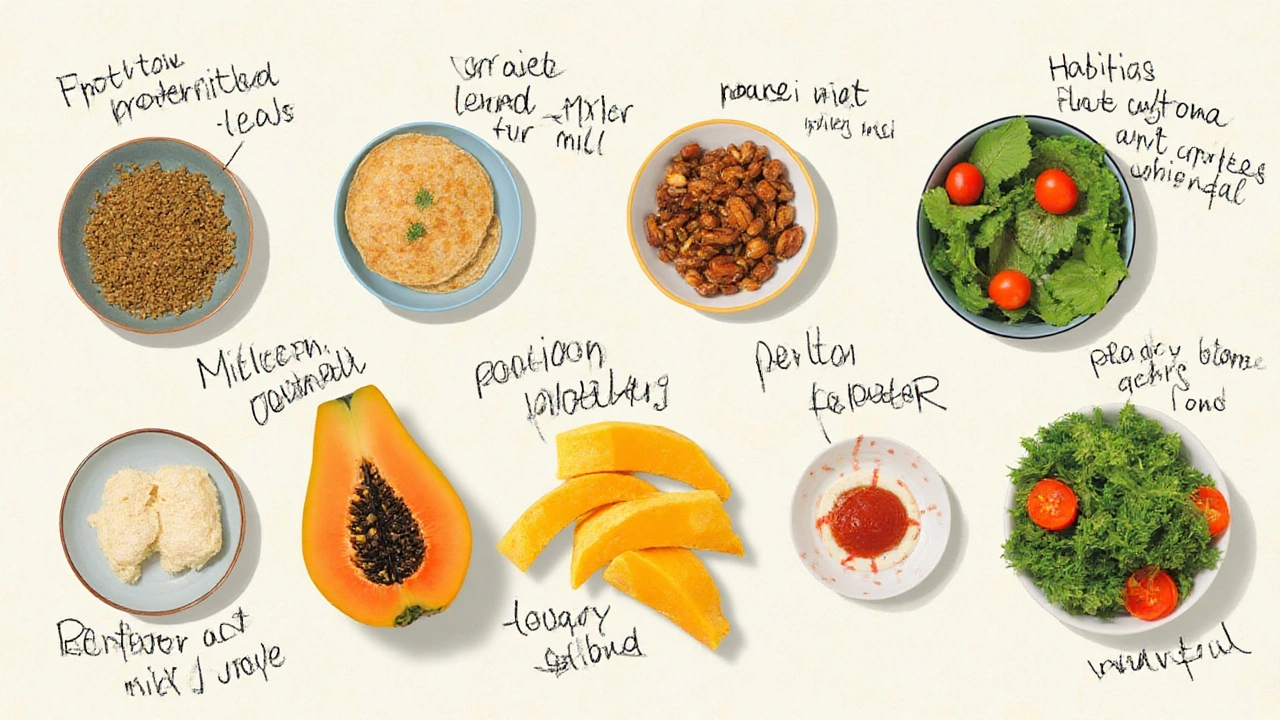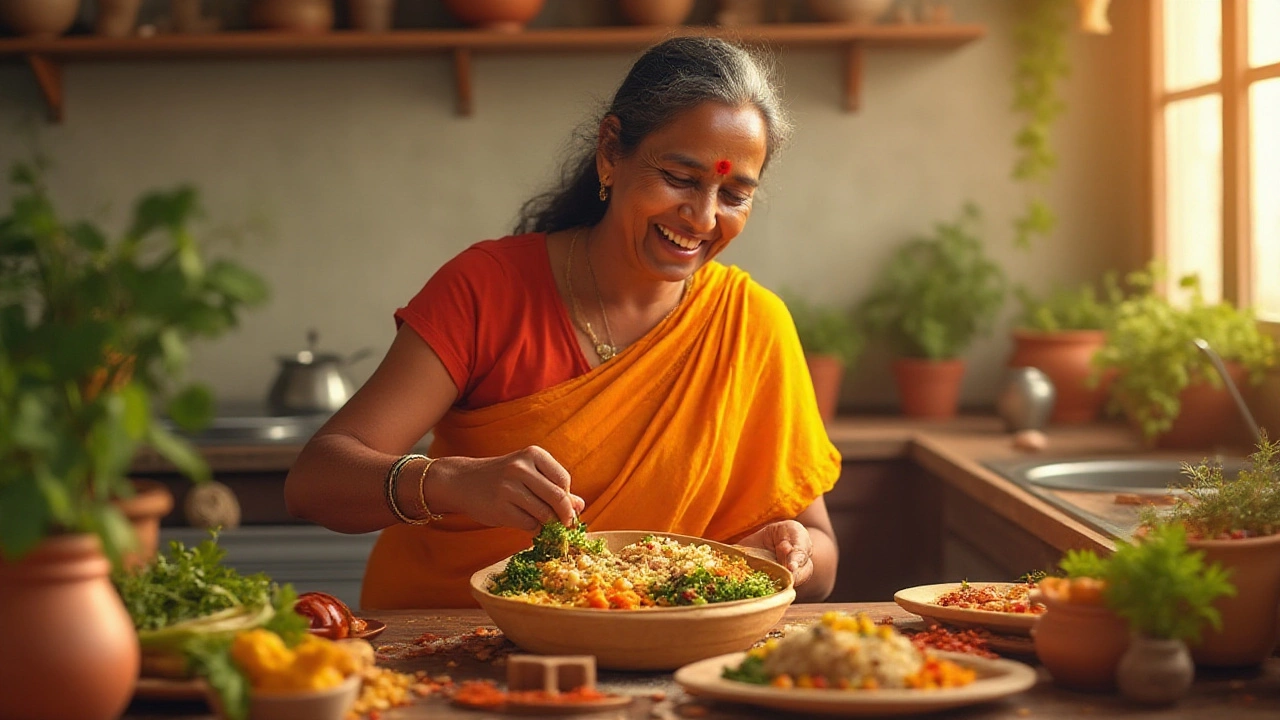Ever notice how losing weight after 50 feels nothing like it used to? Your metabolism isn’t what it was at 25, and those late-night sweet cravings can hit even harder. You’re not imagining things: plenty of studies confirm that women in their mid-50s face unique challenges when it comes to shedding extra kilos. Hormonal changes, especially during menopause, make the usual routines hit a wall. But here’s the wild part: the solution isn’t starving yourself or swallowing a chalky protein shake for dinner—it’s all about eating smarter, not less. Let’s cut through the noise and dial in on what really works.
Understanding the Body at 55: Hormones, Metabolism, and Weight
Metabolism gets a lot of heat, but it’s the hormonal roller coaster that really throws things off track for women over 50. As estrogen takes a nosedive, your body starts hoarding fat—especially around the waist. That’s hardly fair, right? Add in muscle loss (the fancy term is sarcopenia) and your calorie-burning engine sputters. By 55, most women need about 200 fewer calories a day than they did in their thirties just to stay the same weight.
Here’s a kicker: According to a 2023 study published in JAMA Network Open, women lose roughly 3-8% of their muscle every decade after age 30, and this speeds up post-menopause. Less muscle—not more cake—usually means a slower metabolism. But don’t let that discourage you. Knowing what’s happening is half the battle. Understanding your body at 55 means you can adjust your eating without missing out on the things you actually enjoy. That’s the sweet spot: loading up on foods that help your body stay strong, steady your mood, and gently nudge your metabolism back up.
It’s not all gloom and doom, though. The right foods can keep blood sugar balanced, avoid those mid-afternoon crashes, and even help you sleep better. So, instead of slashing calories to dangerous levels, focus on meals that fuel and protect your body. If you’re active—maybe morning walks or yoga—your needs are a little higher, so you can enjoy a bigger breakfast or lunch without guilt.
The Best Foods for a 55-Year-Old Woman to Lose Weight
Here’s where things get both tasty and practical. You want foods that are high in nutrients but not overloaded with calories. Forget bland diet fare—nutrient-rich, colorful meals make a huge difference. For starters, weight loss for women over 50 works best with plenty of lean protein. Eggs, Greek yogurt, paneer (if you eat dairy), tofu, and lentils offer the protein your muscles need to stay strong. Aim for at least 20-30 grams per meal, as recent research from Harvard suggests this can help preserve muscle, even as you’re losing weight.
Next up: fiber. Want to outsmart hunger? Pile your plate with non-starchy veggies—think spinach, broccoli, lauki (bottle gourd), or carrots. Fiber slows digestion, fills you up, and keeps blood sugar stable. Women in their 50s should target at least 25 grams a day. Add legumes like chana (chickpeas) or kala chana (black chickpeas) for even more bulk and protein.
Let’s not vilify carbs. Whole grains like brown rice, oats, quinoa, or millets deliver steady energy and vital minerals like magnesium, which lots of women don’t get enough of. The magic is in picking the least processed and smallest portions. For fats, pick extra virgin olive oil, avocados (if you like them), flaxseeds, walnuts, or even a little ghee in moderation. Those omega-3 fats help with joint pain and inflammation, making it easier to keep moving as you age.
To keep things real, here’s a table with food swaps every woman over 55 should know. Swapping just one or two things at every meal adds up.
| Instead of | Try | Why |
|---|---|---|
| White bread/paratha | Whole grain/multigrain roti | More fiber, steadier blood sugar |
| Potato chips | Roasted chickpeas or nuts | Protein and healthy fats, fewer empty calories |
| Full-sugar tea/coffee | Cut sugar, use spices (ginger, cinnamon) | Less blood sugar spike, anti-inflammatory |
| Large dinner | Larger lunch, smaller dinner | Aids sleep, makes fat-burning easier |

Common Traps: What to Avoid When Trying to Lose Weight
Scrolling Instagram and thinking, “Hey, why not try that three-day cleanse everyone’s raving about?” Well, don’t. Most quick fixes do way more harm than good—especially when you’re 55. Crash diets slow your already sluggish metabolism even more, and you usually gain back more than you lost.
Sneaky calories show up in the weirdest places—sweetened drinks, packaged snacks, and even health bars loaded with honey. Studies have found that women over 50 who drink more than one sweetened beverage a day are at higher risk for both weight gain and metabolic problems. Packaged foods, even those labeled “healthy,” can pack a punch thanks to hidden sugars and bad fats. Think granola, flavored yogurt, and so-called “energy” snacks.
Portion size is where most people slip up. Yes, you can eat rice, but scoop half as much and double the dal and sabzi. Dine out wisely—restaurants tend to over-serve, so split mains with your companion, or ask them to box up half before the meal lands at your table.
- Skip: Deep-fried foods—they’re harder to digest, tough on your heart, and a shortcut to weight gain.
- Limit: Alcohol. The body burns it first, so your real fuel (food) gets stored as fat. Plus, those snacks with your drink don’t help.
- Don’t fear: Healthy fats! A spoon or two of ghee or olive oil actually helps keep you full longer.
Building a Sustainable Eating Routine: Practical Meal Ideas
Nobody wants to live off salads and air for the rest of their life, and, trust me, Mira would never stand for it either. It’s all about routines you can stick with. Start breakfast with a protein and fiber combo: scrambled eggs on whole wheat toast, Greek yogurt with fruit and nuts, or moong dal chilla. For lunch, load up on veggies—have two sabzis, a small serving of dal, some brown rice or millet, and maybe a small bowl of curd.
Dinner should be lighter and not too late—think of it as a way to set you up for better sleep. Grilled fish, mixed veggie stir fry, a cup of soup, or khichdi. For snacks, swap store-bought namkeen or sweets for roasted seeds, fresh fruit with nut butter, or a handful of spiced makhana (fox nuts).
Planning goes a long way: cook extra grains or legumes, store in glass containers, and rotate through the week. If you hit that snacky slump at 4 p.m., try herbal tea or a small fruit, not another cup of sweet tea. Hydration makes a huge difference—often, what feels like hunger is just thirst. Keep a water bottle nearby and sip often, aiming for at least two liters a day.
- Keep a small notebook or app: Jot down what you eat for a week. It’s shocking how much “invisible” food adds up—think of that second roti or after-dinner sweet.
- Batch-cook soups and vegetable stews. You won’t reach for takeout when you’re tired.
- Eat mindfully: Chew slowly, no screens. It helps you catch the full flavor and you actually end up eating less.

Science-Backed Tips and Real-World Motivation
Consistency always beats perfection. A study from the National Institutes of Health in 2024 looked at women aged 50-65 and found that those who stuck to a regular eating window—say, 12 hours between breakfast and dinner—tended to lose more belly fat than those who grazed all day long. So, set a routine: breakfast between 7 and 8, dinner by 7 if you can swing it, and try not to snack afterward.
Movement still counts, too. Eating right is half the story; daily movement keeps metabolism from stalling. You don’t have to sweat buckets—walk for 30 minutes, stretch, or try gentle resistance training (even soup cans at home work). When you build even a little muscle, you unlock a higher calorie-burn at rest. Sleep matters a ton—aim for 7-8 hours, as disrupted sleep messes with hunger hormones and makes you crave carbs the next day.
Got family support? Use it. Make weight loss something to share, not a secret. Swap recipes with friends. Get your partner in on meal prep (as Mira and I do), so you aren’t alone in making healthy changes. Celebrate wins that aren’t about the scale: more energy, clearer skin, less joint pain. That way, it feels rewarding, not punishing.
Quick tip: Focus on small wins each week—maybe swapping out sugary chai for a spiced herbal brew, or adding an extra veggie to lunch. Keep track—you’ll be shocked by how those little changes add up over a month or two.
The most important thing? Give yourself some grace. Bodies change—and so should your approach. Eating for weight loss at 55 is about creating a way of living that makes you feel strong, happy, and ready for whatever comes next.





